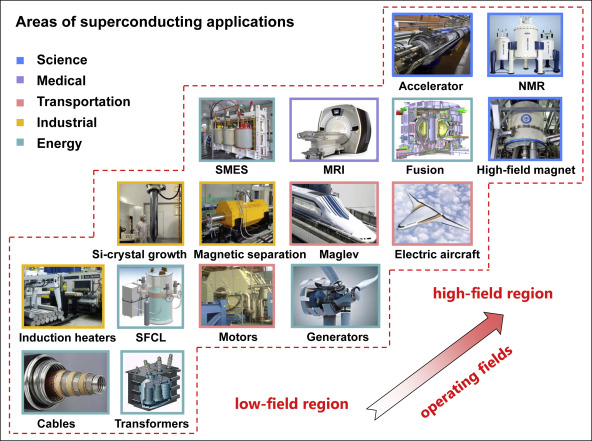Important Facts For Prelims
Superconductivity
- 20 Jan 2023
- 4 min read
Why in News?
Recently, physicists at the University of L'Aquila in Italy have recently made a breakthrough by achieving a full microscopic understanding of the superconductivity of Mercury for the first time.
- Superconductivity was first discovered in mercury, yet scientists required 111 years to explain how it becomes superconducting.
What is Superconductivity?
- Superconductivity:
- Superconductivity refers to a state when a material can conduct electricity without any resistance. It is observed in many materials when they are cooled below a critical temperature.
- Superconductivity of Mercury:
- About:
- In 1911, Heike Kamerlingh Onnes discover superconductivity in mercury.
- Onnes had invented a way to cool materials to absolute zero – the lowest temperature possible.
- Using his technique, he found that at a very low temperature, called the threshold temperature, solid mercury offers no resistance to the flow of electric current. It was a watershed moment in the history of physics.
- Various Methodologies: Superconductivity of mercury is explained by various methodologies:
- The BCS Theory:
- In BCS (Bardeen-Cooper-Schrieffer) superconductors, vibrational energy released by the grid of atoms encourages electrons to pair up, forming so-called Cooper pairs.
- These Copper pairs can move like water in a stream, facing no resistance to their flow, below a threshold temperature.
- These could explain why mercury has such a low threshold temperature (around –270°C).
- Spin-Orbit Coupling:
- Spin-orbit coupling (SOC) is the way an electron’s energy is affected by the relationship between its spin and its momentum.
- SOC gave a better view of the phonons’ energies and explain why mercury has such a low threshold temperature (approx. –270º C).
- Coulomb Repulsion:
- Another factor was the Coulomb repulsion (a.k.a. ‘like charges repel’) between two electrons in each pair.
- The superconducting state is determined by a balance between an attractive interaction between electrons, mediated by phonons, and the repulsive Coulomb interaction (electrostatic repulsion between negative charges).
- The BCS Theory:
- About:
What is Mercury?
- Mercury is a naturally occurring element that is found in air, water and soil.
- Released into the atmosphere through natural processes such as weathering of rocks, volcanic eruptions, geothermal activities, forest fires, etc.
- Mercury is also released through human activities.
- It is the only metal which remains liquid at room temperature.
UPSC Civil Services Examination Previous Year Question (PYQ)
Q. Due to improper/indiscriminate disposal of old and used computers or their parts, which of the following are released into the environment as e-waste? (2013)
- Beryllium
- Cadmium
- Chromium
- Heptachlor
- Mercury
- Lead
- Plutonium
Select the correct answer using the codes given below:
(a) 1, 3, 4, 6 and 7 only
(b) 1, 2, 3, 5 and 6 only
(c) 2, 4, 5 and 7 only
(d) 1, 2, 3, 4, 5, 6 and 7
Ans: (b)







